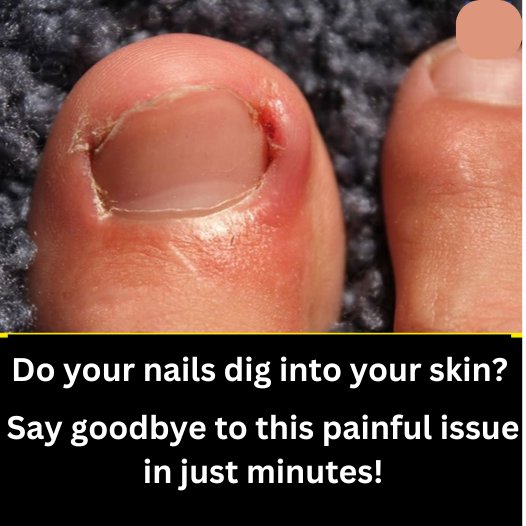Nail fungus, also known as onychomycosis, is a common condition that affects many people. It can cause discoloration of the nails, thickening, and sometimes pain. In this article, we will discuss some home remedies and traditional treatments that can help treat nail fungus and can be easily done at home.
The Problem of Ingrown Toenails
How can you stay comfortable and walk when a toenail has ingrown? When this happens, daily routines are significantly affected, and the risk of infection in the toe increases. It’s a common issue faced by thousands, but it’s not too difficult to get rid of it.
An ingrown toenail is a painful but common problem that can occur on one or both sides of the nail. Tight shoes, injury, wearing jeans, and improper nail cutting can contribute to this condition, leading to pain, swelling, redness, or infection. However, if you face this issue, the following home remedies can provide relief.
Home Remedies
Peppermint Oil
First, soak your feet in water for a while or clean the affected area. After drying the skin, take 2 to 3 drops of peppermint oil and apply them to the affected area. Repeat this process twice a day. The menthol in peppermint oil will help relieve pain and protect against further infection due to its antibacterial properties.
Baking Soda
Baking soda is a natural antiseptic that reduces the risk of infection caused by an ingrown toenail. Take half a teaspoon of baking soda and mix it with a few drops of water to make a thick paste. Apply this paste to the affected area and cover it with a bandage.
Coconut Oil
Take a small amount of coconut oil and apply it to the wound and surrounding area. Repeat this process twice a day. The fatty acids in coconut oil are antifungal and anti-inflammatory, which help in easing pain and removing the ingrown nail.
Garlic
Crush 2 to 3 cloves of garlic and apply the paste to the wound. Cover the paste with a bandage and leave it overnight.
Onion
Cut an onion and place a slice on the wound, then wrap it with a bandage and leave it overnight. Do this before going to bed. The components in onion help alleviate the issue while also providing protection against fungus.
Soaking
Soaking the affected toe in warm water can help reduce swelling and pain. For this purpose, immerse your toe in warm, soapy water for 20 minutes. Doing this three times a day will assist in alleviating the problem quickly.
Salt
Soak your feet in Epsom salt water for 15 to 20 minutes twice daily. If there is no infection, the nail will start to grow out, allowing you to trim it properly.
Cotton
A popular remedy involves placing a small piece of cotton in the area where the nail digs into the skin. This allows the nail to grow outward, giving you the chance to trim it properly. To prevent infection, soak the cotton in apple cider vinegar and change it daily.
Dental Floss
To change the direction of an ingrown nail, place a piece of soft dental floss at the corner of the nail. Cut the part of the floss sticking out and leave it there. This method helps separate the nail from the affected area, relieving pain.
Wax
Apply a small amount of wax to the affected nail and cover it with a bandage. The oils in wax have antiseptic properties, and its lubricating quality helps soften the nail, making it easier to redirect.
Turmeric
Take a teaspoon of turmeric and mix it with a little water to make a paste. Apply it to the affected area and leave it for a few hours. Due to its anti-inflammatory and pain-relieving properties, turmeric helps alleviate this discomfort.
Apple Cider Vinegar
Apple cider vinegar has antiseptic and anti-inflammatory properties that prevent infection while soothing inflamed skin. To use it, take a small piece of cotton, soak it in apple cider vinegar, then place it on the affected nail and wrap it with a bandage for a few hours. After removing the bandage, dry the area.
Consult a Doctor
If none of these methods work and the nail does not improve in 2 to 3 days, consult a doctor. General practitioners are usually successful in treating this issue, but if the situation is complex or the affected area swells excessively, consult a specialist

